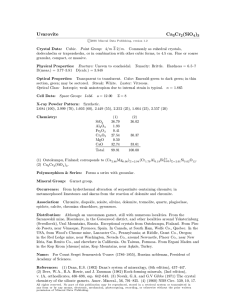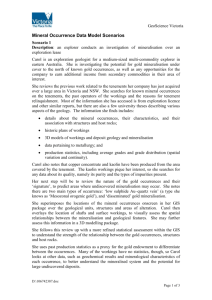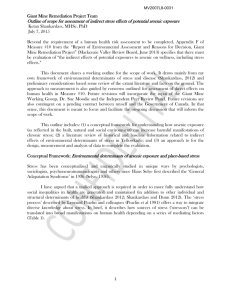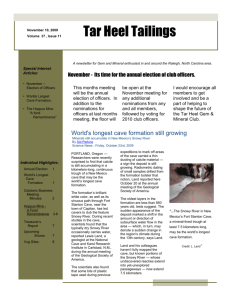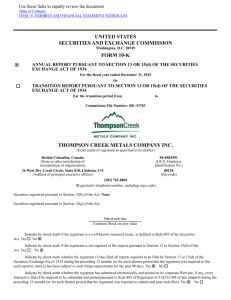live_0708_ful_15-site_investigation_
advertisement
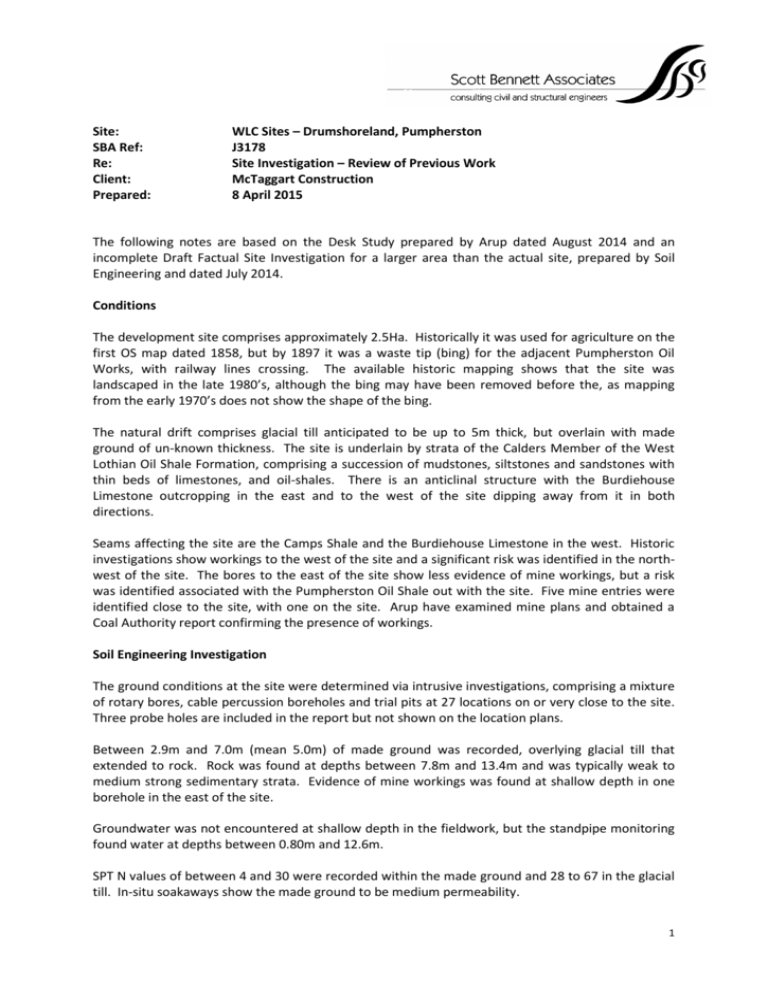
Site: SBA Ref: Re: Client: Prepared: WLC Sites – Drumshoreland, Pumpherston J3178 Site Investigation – Review of Previous Work McTaggart Construction 8 April 2015 The following notes are based on the Desk Study prepared by Arup dated August 2014 and an incomplete Draft Factual Site Investigation for a larger area than the actual site, prepared by Soil Engineering and dated July 2014. Conditions The development site comprises approximately 2.5Ha. Historically it was used for agriculture on the first OS map dated 1858, but by 1897 it was a waste tip (bing) for the adjacent Pumpherston Oil Works, with railway lines crossing. The available historic mapping shows that the site was landscaped in the late 1980’s, although the bing may have been removed before the, as mapping from the early 1970’s does not show the shape of the bing. The natural drift comprises glacial till anticipated to be up to 5m thick, but overlain with made ground of un-known thickness. The site is underlain by strata of the Calders Member of the West Lothian Oil Shale Formation, comprising a succession of mudstones, siltstones and sandstones with thin beds of limestones, and oil-shales. There is an anticlinal structure with the Burdiehouse Limestone outcropping in the east and to the west of the site dipping away from it in both directions. Seams affecting the site are the Camps Shale and the Burdiehouse Limestone in the west. Historic investigations show workings to the west of the site and a significant risk was identified in the northwest of the site. The bores to the east of the site show less evidence of mine workings, but a risk was identified associated with the Pumpherston Oil Shale out with the site. Five mine entries were identified close to the site, with one on the site. Arup have examined mine plans and obtained a Coal Authority report confirming the presence of workings. Soil Engineering Investigation The ground conditions at the site were determined via intrusive investigations, comprising a mixture of rotary bores, cable percussion boreholes and trial pits at 27 locations on or very close to the site. Three probe holes are included in the report but not shown on the location plans. Between 2.9m and 7.0m (mean 5.0m) of made ground was recorded, overlying glacial till that extended to rock. Rock was found at depths between 7.8m and 13.4m and was typically weak to medium strong sedimentary strata. Evidence of mine workings was found at shallow depth in one borehole in the east of the site. Groundwater was not encountered at shallow depth in the fieldwork, but the standpipe monitoring found water at depths between 0.80m and 12.6m. SPT N values of between 4 and 30 were recorded within the made ground and 28 to 67 in the glacial till. In-situ soakaways show the made ground to be medium permeability. 1 CBR testing in the laboratory gives a minimum CBR value of 20% for the made ground. Contamination testing was undertaken on samples from across the site and the 24 available results show the site to be clean, with the exception of arsenic in the centre-north of the site. It was noted that despite the oil industry origins of the made ground organic compounds were present at very low levels. Limited sulphate testing was undertaken. Standpipes were installed on the site, and the ground gas monitoring results show no methane, low CO2 and very low flows. Only four or five visits are reported and additional visits would be required. CONCLUSSIONS The site is underlain by a thick layer of made ground which is variable in the in-situ testing, and is unlikely to provide a suitable foundation formation, without improvement. The underlying natural soils are shown to be competent, but are at such a depth that a piling solution would be required. The made ground is of medium permeability and while soakaway drainage may be possible the constraints of distances from boundaries and structures is likely to make this option unsuitable. For road design the testing gives a CBR of 20%, but it should be checked with the Roads Authority to see if this is acceptable. The desk study has indicated that there are likely to be mineral problems in the east of the site and this has been confirmed by a mineral borehole. The contamination testing has indicated that an area in the centre north of the site has elevated levels of arsenic. Ground gas monitoring results show no requirement for gas protection in new properties. Concrete on the site should match DS-2 AC-2, but more testing is recommended. RECOMMENDATIONS SBA have reviewed the incomplete, draft, factual site investigation report and the following points require to be addressed, or determined from other sources. A full interpretative report dealing with the development site only will be required for submission to the relevant authorities. Further results for gas monitoring will be required to confirm that no gas protection is required. A full mineral assessment will be required taking account of the original desk study and the findings of the mineral bores, to determine the extents of any mineral consolidation works required. A search will be required to locate the mine shaft on the site. The area affected by arsenic contamination may be better defined with additional sampling and testing. Additional sulphate testing is recommended. CBR testing on the actual line of the roads, after consultation with the Roads Authority. 2
